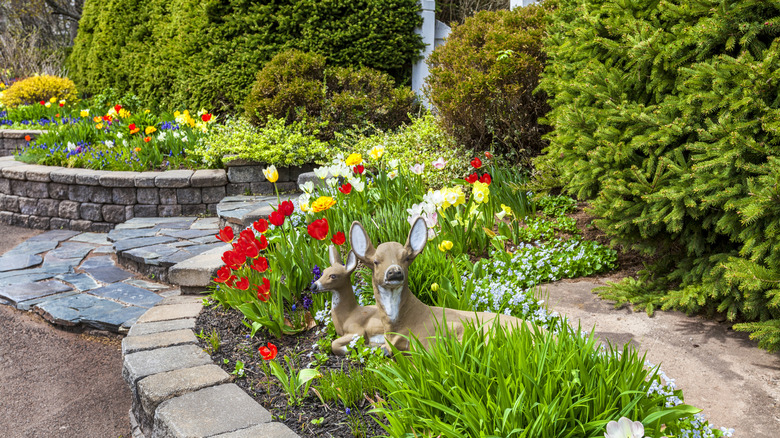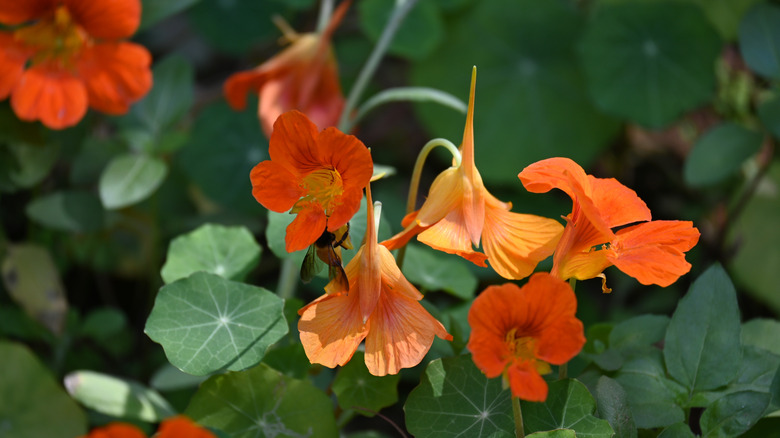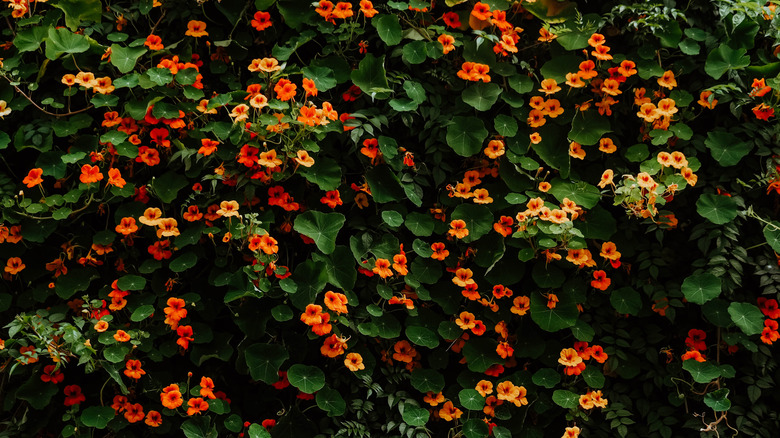The Deer-Resistant Summer Flower That Yields Gorgeous Fall Blooms
Most gardeners eagerly anticipate the spring and summer months. After all, these are the seasons when all their hard work blooms — quite literally — into vibrant color. But, these are also the times when deer are most active, foraging wherever (and for whatever) they can. So if you spot deer or signs of their visits, such as trampled plants, hoof prints, or torn leaves, in your garden, it's easy to feel frustrated. But, before you throw in the trowel, there are deer-resistant plants that can save your garden – and one in particular that will keep it looking beautiful with blooms all the way into fall.
Nasturtium (Tropaeolum majus), which you may recognize as Meghan Markle's favorite edible flower, is a vibrant, fast-growing flower that lasts all summer long and keeps the deer far away. It does this by producing a peppery smell and taste that most deer find unappetizing. This turns these bright yellow and orange flowers into a natural defense for your garden, and one that will keep your plants intact throughout the blooming season. For gardeners in areas with high volumes of deer traffic, this could be just the bloom you've been looking for.
Nasturtiums last right until the first frost of fall
Besides their deer-repelling abilities, nasturtiums are also known for putting on a show long after their other floral counterparts have fallen flat for the season. For those who like to be prepared, nasturtium is a flower you should seed indoors in February to give it the best head start for summer. They usually begin to burst into life with their colorful blooms once the temperatures start to warm up at the end of spring. From then on, they grow quickly and bloom profusely, filling borders, containers, and empty garden gaps with cheerful color.
Unlike other summer annuals that fade along with the shift in seasons, nasturtiums continue to thrive when the weather starts to cool. As fall approaches, nasturtium's jewel-toned blooms often continue right up to the first frost. So, if you're looking for a flower that brings lasting vibrancy well into the cooler fall months, this is it.
How to plant nasturtium
Nasturtiums are one of the easiest plants to grow for beginner gardeners, making them ideal for both novices and seasoned green thumbs. If you don't start them indoors in early spring, you can sow seeds directly outdoors after the last frost. Choose a sunny spot to help them thrive and plant these seeds about 10 to 12 inches apart in well-drained soil. Skip the fertilizerthough, as you'll only need to feed nasturtiums if you have poor soil. You'll find that too much fertilization can encourage leafy growth, so skipping it can lead to more blooms.
Nasturtiums come in two different forms, one is compact and perfect for containers or borders, while the other is trailing, which suits hanging baskets or raised flower beds. Hardy in USDA Zones 2 through to 11, while these beauties are drought tolerant, watering them throughout the summer months, is the best way to keep them blooming.
As summer winds down, your nasturtiums won't. They keep blooming straight into fall, offering a colorful, low maintenance plant you can still admire as the cold sets in. And since they're deer-resistant, edible, fast-growing, and seriously pretty, they might just be the MVP (most valuable player) of your flower garden.


